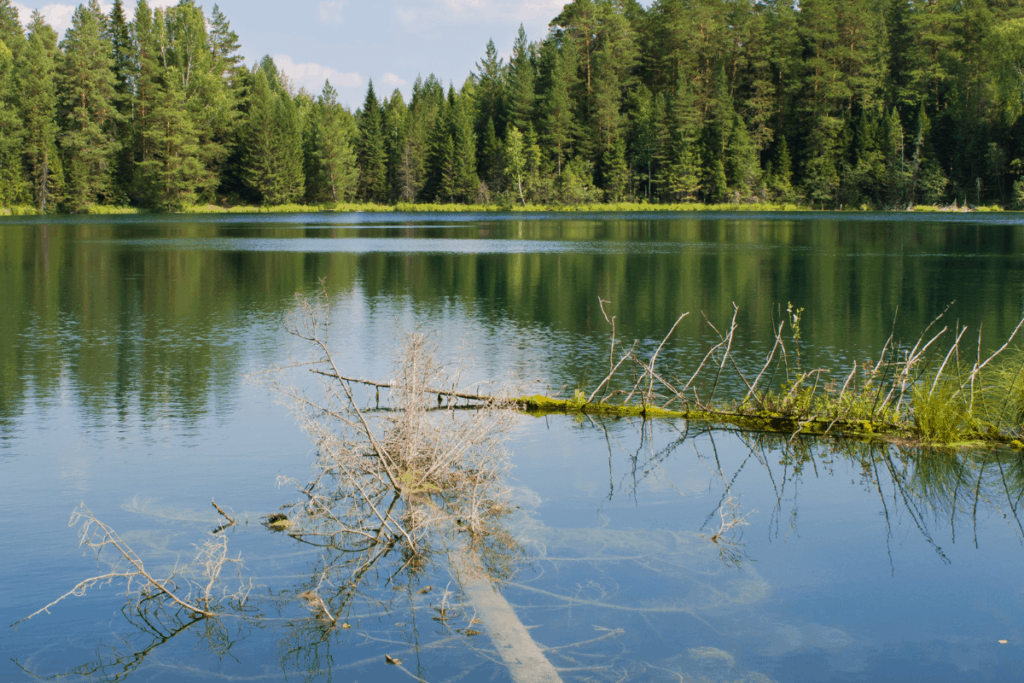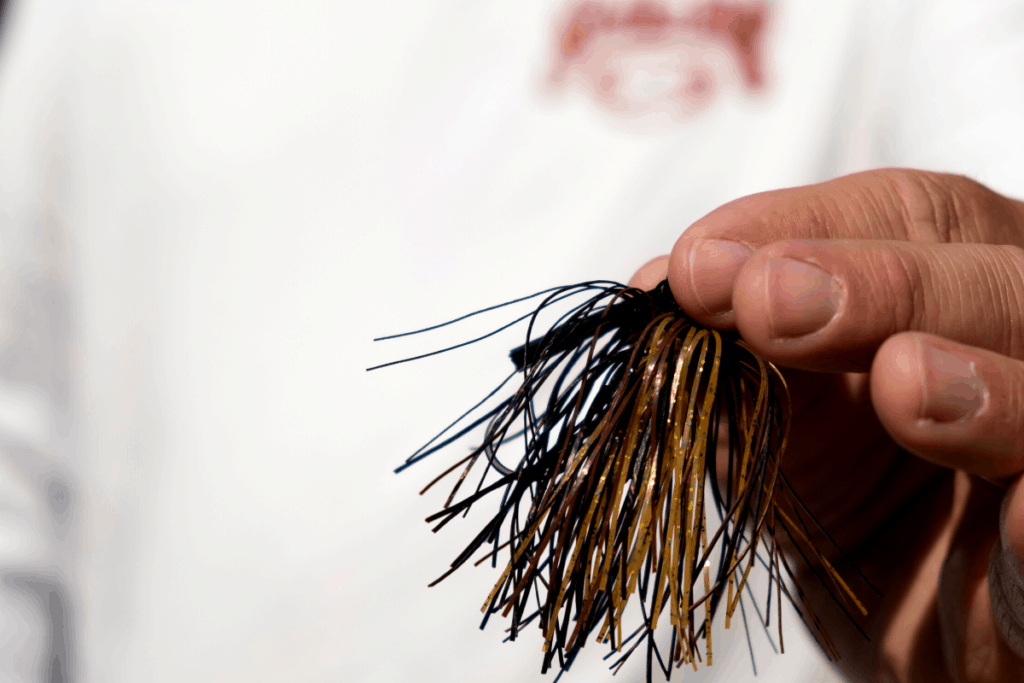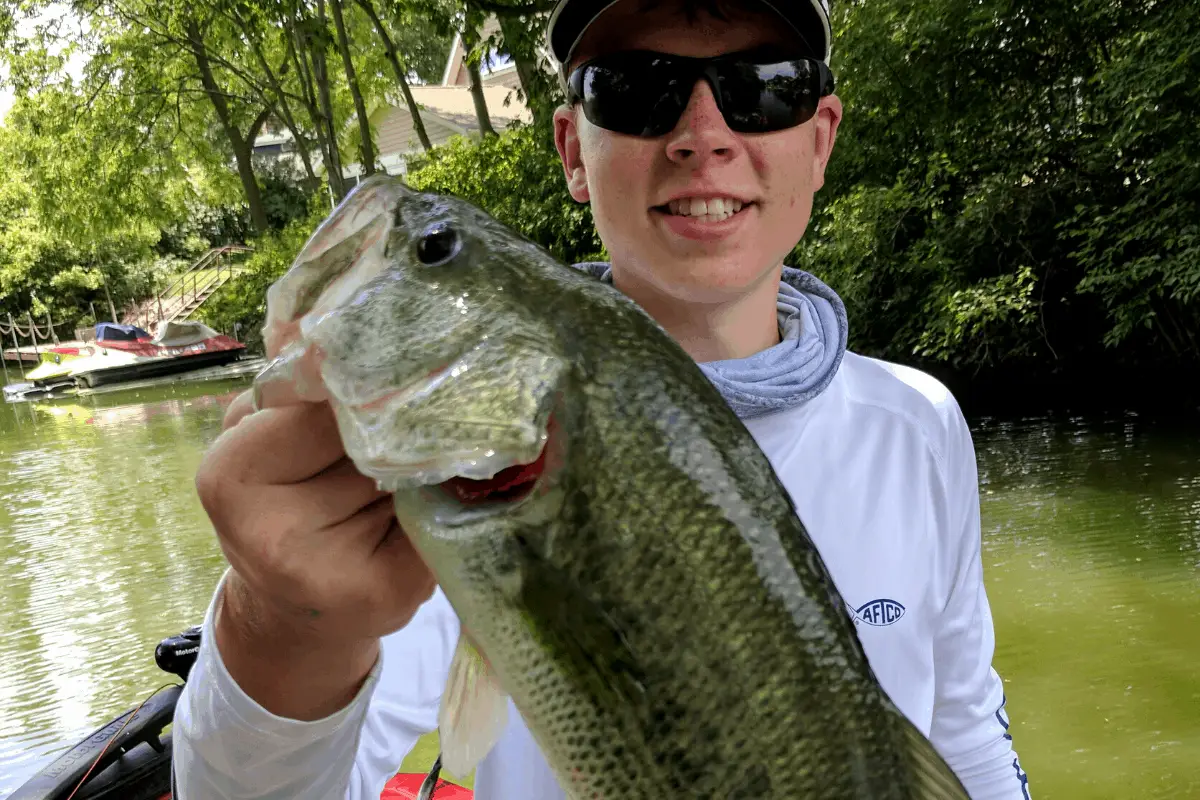It is no surprise that bass jigs catch a lot of fish. Jigs have been responsible for numerous tournament wins over the decades. Unlike some other lures, a jig takes more attention to detail to be successful.
Bass jigs should be used around heavy cover and on a rod designed for jig fishing. These lures are perfect for dragging across the bottom of a lake or river but can also be fished up in the water column by swimming them.
There are many artificial baits on the market that an angler just picks up and uses with little thought to the equipment and presentation. A jig is not one of them. Well, you can, but the results will not be what you are looking for. In this article, I will break down all the details needed to make this lure a favorite.
Be Around Heavy Cover when Jig Fishing
Bass anglers know that big fish live in some really nasty and gnarly stuff. Yet most of us will avoid throwing into that type of situation because the odds of getting “hung” are high. Lures are expensive. We don’t want to lose them.
To be a successful jig angler we need to change that mindset.
Jigs are meant to be used in situations that no sane person would put them. The bass that call those thick and impenetrable places home are the same ones that will tip the scales in your favor.
It takes some practice, but you will soon learn how to best retrieve a jig through those situations, but you have to be willing to put that bait in places other anglers are not. Once you take control of the mental block that keeps anglers from tossing into that stuff, you will have an entirely new lake or river to fish. Why? Because so many people never toss a lure there.

The Correct Rod Jig Fishing Rod
Fishing in that thick stuff requires the right rod. The proper fishing pole will keep the head of the bass from turning and allow the angler to immediately transfer energy straight to the hookset.
With the fish unable to turn, the odds of pulling it out of cover and getting it to the boat are increased exponentially.
So what is the correct jig rod?
If you are pitching into thick cover, a Heavy Power Rated rod with an Extra Fast or Fast Action is what you are looking for. The tip of the rod needs to get to the backbone almost immediately. If there is too much flex, or give, in the rod the odds of getting the fish out are almost nill.
A good pitching jig rod almost feels like a telephone pole, yet still is nimble enough at the tip to allow for accurate lure placement.
If you are using a jig more for “bottom bouncing” you can use a Medium Heavy Power Rating with great success.
Setting the Reel Correctly
I have seen many anglers lose bass when jig fishing because of this. The drag needs to be cranked all the way down. This is not the time to allow the fish to run with the lure and 100% of the energy needs to be transferred to the hook for penetration. We don’t want slippage.
If you are pitching the jig, then loosen the spool tension and the braking system. You want the lure to fly off the reel with no effort. This will allow you to make longer pitches as well as give the lure the opportunity to enter the water with little-to-no ripple. A silent entry means you are more likely to get a reaction strike.
Taking a few minutes to make the adjustments needed to your reel will pay off with huge dividends.
The Importance of Slack Line when Fishing a Jig
For a jig to work its best it must drop on a slack line. When a bass jig falls in a completely vertical manner, the most natural action is allowed to happen. The worst thing a jig can do is swing back to the angler in a pendulum motion.
Soft plastic trailers will also have the most life when presented with a straight vertical drop.
To ensure that your bait falls on a slack line, lower your rod tip as the jig enters the water. If you are letting the jig travel quite a distance, you may need to peel line from the spool as it drops.
Be vigilant. Many bites will happen as the lure falls. Watch and see if the line stops sinking or if there is the slightest twitch. If so, reel up and set the hook.
Heavy Line
When pitching into thick cover, heavy line is a must. I prefer to use 50lb braid. Some jig anglers go even heavier than that, but I have had great success with this size.
Braid not only is extremely sensitive, but it can take the abrasion that will occur when tossed into brush piles and around dock cables.
Remember, most of the strikes in this thick cover will be true reaction strikes. The bass are not going to get a long look at the bait. It will drop in front of them and they will simply react to it.
Proper Reel Selection for Jig Fishing
This is definitely a time when you want a high-speed reel. Look for an offering with a gear ratio that is 7.2:1 or higher.
A high-speed reel will do two things for you. First, it will allow you to make many more presentations in a day of fishing. Once you are finished with your cast, you can reel that line up quickly and get to the next pitch.
Second, and perhaps most important, a high-speed reel gives the angler the power needed to winch that fish out of that heavy cover. Remember that part about the slack line earlier? A high-speed reel will pick up that extra braid so fast the fish won’t even have time to know what happened.
The Hookset
This is the time for that legendary power hookset.
There are many situations when we need a more subtle, side sweep hookset. This is not the time for that.
When you feel that thump, reel that little bit of slack and then hammer it home. Not only will this give you the best penetration possible, but it will also keep the head of that big bass coming towards you and out of the thick cover.
A less powerful hookset when jig fishing will put the odds in the favor of the bass as it turns and buries up so deep you will never see it.

Keep it Simple
When choosing colors and jig trailers, simplicity is important. It is so easy to be overwhelmed at the tackle store. There are thousands of possible combinations and every angler has his or her own favorites.
To start off your jig fishing collection, focus on three colors: black-blue, green pumpkin, and brown.
Match the trailer of your choice with the color of the jig and you are set.
As you progress in your jig fishing career, you will make slight variations to color options and find some that you are confident in. At first, focus on those three choices and life will be good.
Final Thoughts
Jig fishing in heavy cover for huge bass is something that I never, ever get tired of. When that line jumps and you rear back on a six-pounder fighting its way out of the brush – well, let’s just say that is a major adrenaline rush. Get the smartphones out because it is photo time!
These eight tips will put the odds in your favor and make jig fishing something you can not get enough of.
Good luck out there, be safe, and don’t forget to encourage someone today, you never know how you may change their life forever!

